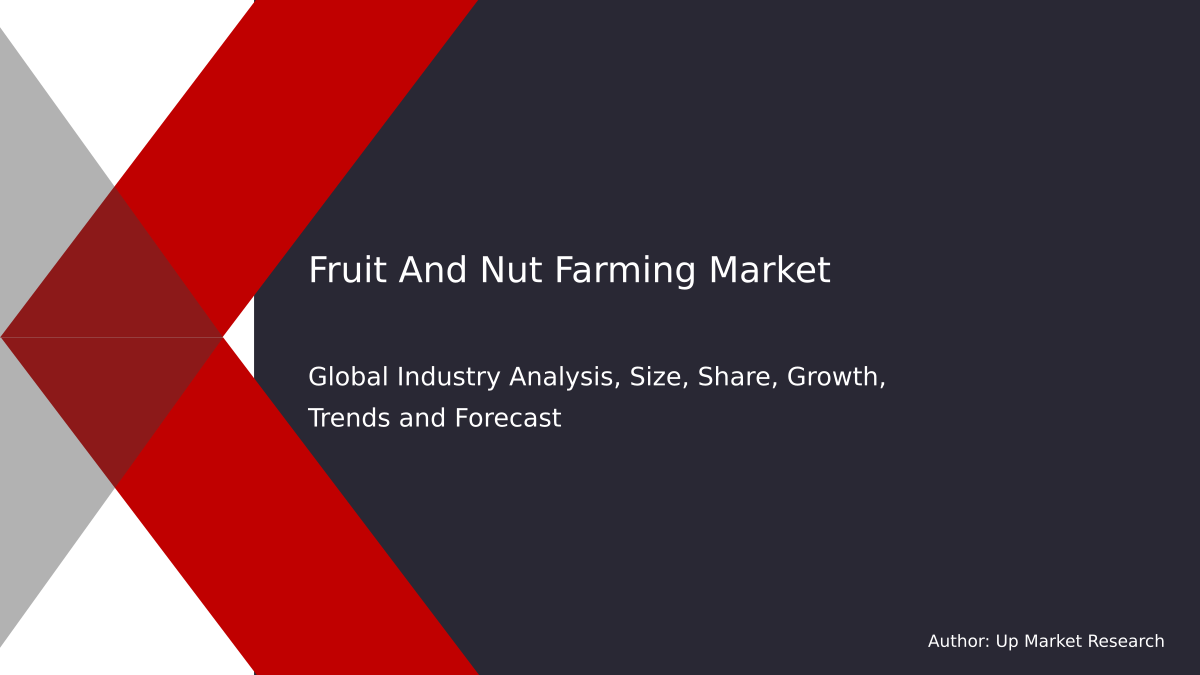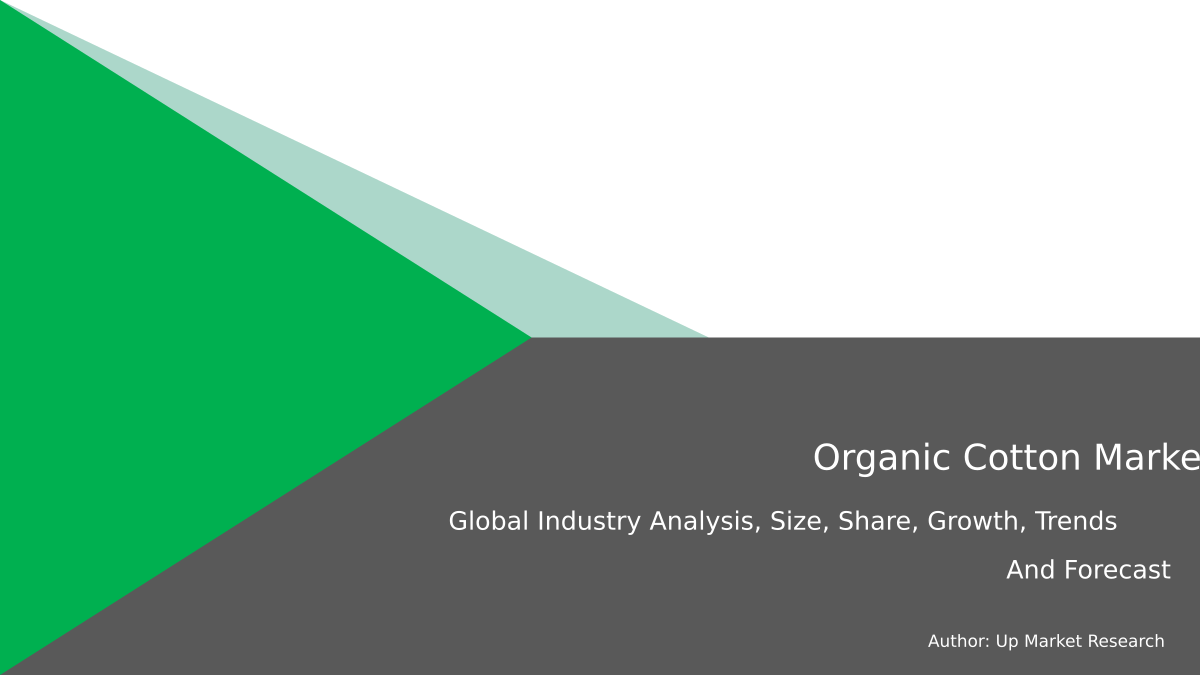
Global Phosphoric Acid Market by Application (DAP, MAP, TSP) and Region (North America, Latin America, Europe, Asia Pacific and Middle East & Africa), Forecast To 2028
Summary of the Report
Global phosphoric acid market was worth USD 45.85 million in 2019. It is projected to grow at a compound annual rate (CAGR), of 3.7% between 2020 and 2027. The market is expected to grow due to the high usage of phosphoric acids for the production of phosphate fertilers such as Mono-Ammonium Phosphate and Diammonium Phosphate. Globally, phosphoric Acid is the second most commonly consumed inorganic acid after that of sulfuric acid. It can be produced industrially in three grades, each with a different concentration depending on its intended use. There are three types of phosphoric acid: food grade, agricultural grade, and industrial. Due to its high use in fertilizer manufacturing, agriculture grade phosphoric acids leads the global market in both volume and value.
The rapid increase in China's agricultural output and economic development has fueled the demand for fertilizers. This has led to an increase in domestic production and increased consumption. The production is expected to grow at a moderate rate due to strict government regulations. India is expected to experience significant growth in the consumption and production of the chemical. The positive effects of increased agricultural activities and growing exports will also be seen in the production.
Markets are also benefiting from the constant debate about food safety in relation to crop yield and efficient cultivation. However, the use of too many phosphate- and nitrogen-based synthetic fertilizers has led to the development sustainable alternatives such as organic chemicals and micronutrients. These bio-based products have been developed to be more competitive with conventional fertilizers on the market. This will negatively impact market growth.
The mature phase of product demand in North America and Asia Pacific has seen a modest growth rate for the chemical. However, the demand and production of phosphoric acid have been boosted by the positive government regulations and increased agricultural activity in Latin America, Asia Pacific, and the Middle East and Africa.
The projected global average economic growth of 3.52% per year is expected to result in significant poverty reductions and elimination by 2050. Per capita incomes will also grow substantially. Asia Pacific is the dominant region in agriculture and has the highest fertilizer consumption. This is due to large exports from the developing world, fertile lands, large populations, favorable weather conditions and large amounts of fertilizers.
The growing population has also caused a decrease in arable land, so there is a need for fast-growing chemicals. This is why synthetic chemicals are preferred to natural or bio-based. The United States is the home of many fertilizer companies and is one of North America's most important agrochemical industries.
Application Insights
DAPled the market in volume with a 35% share in 2019. DAP fertilizers are increasingly in demand from the agriculture industry. This is why DAP has a large share of the market. China is the largest manufacturer of DAP fertilizers in the world, followed by Brazil, the United States, Russia and Brazil. Because it has a high nutrient content, it is a popular choice for farmers around the world. DAP production of one ton of DAP requires approximately 0.4 tons sulfur to dissolve 1.5-2 tons of phosphate rocks, and about 0.2 tons ammonia.
Pricing of DAP is largely dependent on fluctuations in the price and availability feedstocks as well as transportation costs and handling & storage costs. From 2020 to 2027, the Monoammonium Dihydrogenphosphate segment (MAP) will experience the highest CAGR. China is the largest MAP consuming nation. China, Russia and Morocco are the top MAP exporting nations. The U.S. is the largest MAP importer. Brazil, Canada and Australia are the top MAP importing countries. This is due to their increasing agricultural activities over the last two decades.
Mono ammoniumphosphate's fastest growth rate can be attributed to its constituents (nitrogen and phosphorus), which are essential components. The product's water solubility allows it to mix easily in moist soil. To achieve optimal plant growth, the product should be applied below the soil surface in close proximity to plant roots. It is used in the formulation of fire extinguishers. These are widely used by all institutions worldwide as a fire prevention protocol.
Regional Insights
Asia Pacific was the biggest market in 2019, accounting for over 48% of global sales. Due to the high phosphate rock resources in China, which is also an important producer of phosphoric acids, Asia Pacific is expected to maintain its dominant position for the next few years. It also has high levels of yellow phosphorus and phosphate fertilizers. Due to strict regulations regarding the use of phosphate fertilizers, the country has seen a decrease in product demand in recent years.
Aditya Birla Grasun Chemicals Limited is the largest manufacturer of food-grade phosphoric acids, which are generally manufactured using the thermal process. Food-grade phosphoric acids demand will be boosted by the changing lifestyle and economic growth. The current Chinese chemical industry is being closely monitored by the regional government in order to prevent environmental degradation and to address the COVID-19 epidemic.
These factors led to the closure of several chemical manufacturing plants. This includes the Sichuan Province phosphoric acid plant closing, as well as all major chemical manufacturing sites across the country in the first quarter 2020. APAC and African countries will see significant growth in volume due to rising food demand. South Africa is a key market for the product in Africa, due to the country's volatility in crop production and changing weather conditions.
Only 14% of South Africa's total territory receives enough rainfall to support crop growth. Consequently, only 10% of the land is used for farming. Despite the low availability of cultivable land in South Africa, the annual agricultural output meets the local food demand. This is due to the widespread use of synthetic fertilizers as well as other chemically-derived crop protection products.
Market Share Insights & Key Companies
Globally, the industry is dominated by multimillion-dollar companies. Many companies have formed alliances in the industry through mergers & acquisitions, joint ventures, and other arrangements. The Mosaic Group, for example, was created in 2004 by the merger of Cargill’s crop nutrition fertilizer business and IMC Global Inc. Nutrien was also formed in 2017 as a result of a merger between Agrium, Potash Corp. of Saskatchewan and Nutrien. To increase their market share, key producers have taken other strategic initiatives to adapt to the industry's constant evolution. The following are some of the most prominent players in the global market for phosphoric acids:
-
The Mosaic Company
-
PJSC PhosAgro
-
Nutrien
-
IFFCO
-
EuroChem Group AG
-
Prayon Group
-
Israel Chemical Ltd.
-
Yara International
-
OCP S.A.
-
Aditya Birla Group
Up Market Research published a new report titled “Phosphoric Acid Market research report which is segmented by Application (DAP, MAP, TSP), By Players/Companies EuroChem Group AG, Prayon Group, IFFCO, Yara International, The Mosaic Company, PJSC PhosAgro, Nutrien, Israel Chemical Ltd, OCP SA, Aditya Birla Group”. As per the study the market is expected to grow at a CAGR of XX% in the forecast period.
Report Scope
| Report Attributes | Report Details |
| Report Title | Phosphoric Acid Market Research Report |
| By Application | DAP, MAP, TSP |
| By Companies | EuroChem Group AG, Prayon Group, IFFCO, Yara International, The Mosaic Company, PJSC PhosAgro, Nutrien, Israel Chemical Ltd, OCP SA, Aditya Birla Group |
| Regions Covered | North America, Europe, APAC, Latin America, MEA |
| Base Year | 2020 |
| Historical Year | 2018 to 2019 (Data from 2010 can be provided as per availability) |
| Forecast Year | 2028 |
| Number of Pages | 207 |
| Number of Tables & Figures | 145 |
| Customization Available | Yes, the report can be customized as per your need. |
The report covers comprehensive data on emerging trends, market drivers, growth opportunities, and restraints that can change the market dynamics of the industry. It provides an in-depth analysis of the market segments which include products, applications, and competitor analysis.

Global Phosphoric Acid Market Report Segments:
The market is segmented by Application (DAP, MAP, TSP).
Phosphoric Acid Market research report delivers a close watch on leading competitors with strategic analysis, micro and macro market trend and scenarios, pricing analysis and a holistic overview of the market situations in the forecast period. It is a professional and a detailed report focusing on primary and secondary drivers, market share, leading segments and geographical analysis. Further, key players, major collaborations, merger & acquisitions along with trending innovation and business policies are reviewed in the report.
Key Benefits for Industry Participants & Stakeholders:
- Industry drivers, restraints, and opportunities covered in the study
- Neutral perspective on the market performance
- Recent industry trends and developments
- Competitive landscape & strategies of key players
- Potential & niche segments and regions exhibiting promising growth covered
- Historical, current, and projected market size, in terms of value
- In-depth analysis of the Phosphoric Acid Market
Overview of the regional outlook of the Phosphoric Acid Market:
Based on region, the market is segmented into North America, Europe, Asia Pacific, Latin America and Middle East & Africa (MEA). North America region is further bifurcated into countries such as U.S., and Canada. The Europe region is further categorized into U.K., France, Germany, Italy, Spain, Russia, and Rest of Europe. Asia Pacific is further segmented into China, Japan, South Korea, India, Australia, South East Asia, and Rest of Asia Pacific. Latin America region is further segmented into Brazil, Mexico, and Rest of Latin America, and the MEA region is further divided into GCC, Turkey, South Africa, and Rest of MEA.

Highlights of The Phosphoric Acid Market Report:
- The market structure and projections for the coming years.
- Drivers, restraints, opportunities, and current trends of Phosphoric Acid Market.
- Historical data and forecast.
- Estimations for the forecast period 2028.
- Developments and trends in the market.
1. DAP
2. MAP
3. TSP
- Market scenario by region, sub-region, and country.
- Market share of the market players, company profiles, product specifications, SWOT analysis, and competitive landscape.
- Analysis regarding upstream raw materials, downstream demand, and current market dynamics.
- Government Policies, Macro & Micro economic factors are also included in the report.
We have studied the Phosphoric Acid Market in 360 degrees via. both primary & secondary research methodologies. This helped us in building an understanding of the current market dynamics, supply-demand gap, pricing trends, product preferences, consumer patterns & so on. The findings were further validated through primary research with industry experts & opinion leaders across countries. The data is further compiled & validated through various market estimation & data validation methodologies. Further, we also have our in-house data forecasting model to predict market growth up to 2028.
How you may use our products:
- Correctly Positioning New Products
- Market Entry Strategies
- Business Expansion Strategies
- Consumer Insights
- Understanding Competition Scenario
- Product & Brand Management
- Channel & Customer Management
- Identifying Appropriate Advertising Appeals

Reasons to Purchase the Phosphoric Acid Market Report:
- The report includes a plethora of information such as market dynamics scenario and opportunities during the forecast period
- Segments and sub-segments include quantitative, qualitative, value (USD Million,) and volume (Units Million) data.
- Regional, sub-regional, and country level data includes the demand and supply forces along with their influence on the market.
- The competitive landscape comprises share of key players, new developments, and strategies in the last three years.
- Comprehensive companies offering products, relevant financial information, recent developments, SWOT analysis, and strategies by these players.
Chapter 2 Assumptions and Acronyms Used
Chapter 3 Research Methodology
Chapter 4 Phosphoric Acid Market Overview
4.1 Introduction
4.1.1 Market Taxonomy
4.1.2 Market Definition
4.1.3 Macro-Economic Factors Impacting the Market Growth
4.2 Phosphoric Acid Market Dynamics
4.2.1 Market Drivers
4.2.2 Market Restraints
4.2.3 Market Opportunity
4.3 Phosphoric Acid Market - Supply Chain Analysis
4.3.1 List of Key Suppliers
4.3.2 List of Key Distributors
4.3.3 List of Key Consumers
4.4 Key Forces Shaping the Phosphoric Acid Market
4.4.1 Bargaining Power of Suppliers
4.4.2 Bargaining Power of Buyers
4.4.3 Threat of Substitution
4.4.4 Threat of New Entrants
4.4.5 Competitive Rivalry
4.5 Global Phosphoric Acid Market Size & Forecast, 2018-2028
4.5.1 Phosphoric Acid Market Size and Y-o-Y Growth
4.5.2 Phosphoric Acid Market Absolute $ Opportunity
Chapter 5 Global Phosphoric Acid Market Analysis and Forecast by Application
5.1 Introduction
5.1.1 Key Market Trends & Growth Opportunities by Application
5.1.2 Basis Point Share (BPS) Analysis by Application
5.1.3 Absolute $ Opportunity Assessment by Application
5.2 Phosphoric Acid Market Size Forecast by Application
5.2.1 DAP
5.2.2 MAP
5.2.3 TSP
5.3 Market Attractiveness Analysis by Application
Chapter 6 Global Phosphoric Acid Market Analysis and Forecast by Region
6.1 Introduction
6.1.1 Key Market Trends & Growth Opportunities by Region
6.1.2 Basis Point Share (BPS) Analysis by Region
6.1.3 Absolute $ Opportunity Assessment by Region
6.2 Phosphoric Acid Market Size Forecast by Region
6.2.1 North America
6.2.2 Europe
6.2.3 Asia Pacific
6.2.4 Latin America
6.2.5 Middle East & Africa (MEA)
6.3 Market Attractiveness Analysis by Region
Chapter 7 Coronavirus Disease (COVID-19) Impact
7.1 Introduction
7.2 Current & Future Impact Analysis
7.3 Economic Impact Analysis
7.4 Government Policies
7.5 Investment Scenario
Chapter 8 North America Phosphoric Acid Analysis and Forecast
8.1 Introduction
8.2 North America Phosphoric Acid Market Size Forecast by Country
8.2.1 U.S.
8.2.2 Canada
8.3 Basis Point Share (BPS) Analysis by Country
8.4 Absolute $ Opportunity Assessment by Country
8.5 Market Attractiveness Analysis by Country
8.6 North America Phosphoric Acid Market Size Forecast by Application
8.6.1 DAP
8.6.2 MAP
8.6.3 TSP
8.7 Basis Point Share (BPS) Analysis by Application
8.8 Absolute $ Opportunity Assessment by Application
8.9 Market Attractiveness Analysis by Application
Chapter 9 Europe Phosphoric Acid Analysis and Forecast
9.1 Introduction
9.2 Europe Phosphoric Acid Market Size Forecast by Country
9.2.1 Germany
9.2.2 France
9.2.3 Italy
9.2.4 U.K.
9.2.5 Spain
9.2.6 Russia
9.2.7 Rest of Europe
9.3 Basis Point Share (BPS) Analysis by Country
9.4 Absolute $ Opportunity Assessment by Country
9.5 Market Attractiveness Analysis by Country
9.6 Europe Phosphoric Acid Market Size Forecast by Application
9.6.1 DAP
9.6.2 MAP
9.6.3 TSP
9.7 Basis Point Share (BPS) Analysis by Application
9.8 Absolute $ Opportunity Assessment by Application
9.9 Market Attractiveness Analysis by Application
Chapter 10 Asia Pacific Phosphoric Acid Analysis and Forecast
10.1 Introduction
10.2 Asia Pacific Phosphoric Acid Market Size Forecast by Country
10.2.1 China
10.2.2 Japan
10.2.3 South Korea
10.2.4 India
10.2.5 Australia
10.2.6 South East Asia (SEA)
10.2.7 Rest of Asia Pacific (APAC)
10.3 Basis Point Share (BPS) Analysis by Country
10.4 Absolute $ Opportunity Assessment by Country
10.5 Market Attractiveness Analysis by Country
10.6 Asia Pacific Phosphoric Acid Market Size Forecast by Application
10.6.1 DAP
10.6.2 MAP
10.6.3 TSP
10.7 Basis Point Share (BPS) Analysis by Application
10.8 Absolute $ Opportunity Assessment by Application
10.9 Market Attractiveness Analysis by Application
Chapter 11 Latin America Phosphoric Acid Analysis and Forecast
11.1 Introduction
11.2 Latin America Phosphoric Acid Market Size Forecast by Country
11.2.1 Brazil
11.2.2 Mexico
11.2.3 Rest of Latin America (LATAM)
11.3 Basis Point Share (BPS) Analysis by Country
11.4 Absolute $ Opportunity Assessment by Country
11.5 Market Attractiveness Analysis by Country
11.6 Latin America Phosphoric Acid Market Size Forecast by Application
11.6.1 DAP
11.6.2 MAP
11.6.3 TSP
11.7 Basis Point Share (BPS) Analysis by Application
11.8 Absolute $ Opportunity Assessment by Application
11.9 Market Attractiveness Analysis by Application
Chapter 12 Middle East & Africa (MEA) Phosphoric Acid Analysis and Forecast
12.1 Introduction
12.2 Middle East & Africa (MEA) Phosphoric Acid Market Size Forecast by Country
12.2.1 Saudi Arabia
12.2.2 South Africa
12.2.3 UAE
12.2.4 Rest of Middle East & Africa (MEA)
12.3 Basis Point Share (BPS) Analysis by Country
12.4 Absolute $ Opportunity Assessment by Country
12.5 Market Attractiveness Analysis by Country
12.6 Middle East & Africa (MEA) Phosphoric Acid Market Size Forecast by Application
12.6.1 DAP
12.6.2 MAP
12.6.3 TSP
12.7 Basis Point Share (BPS) Analysis by Application
12.8 Absolute $ Opportunity Assessment by Application
12.9 Market Attractiveness Analysis by Application
Chapter 13 Competition Landscape
13.1 Phosphoric Acid Market: Competitive Dashboard
13.2 Global Phosphoric Acid Market: Market Share Analysis, 2019
13.3 Company Profiles (Details – Overview, Financials, Developments, Strategy)
13.3.1 EuroChem Group AG
13.3.2 Prayon Group
13.3.3 IFFCO
13.3.4 Yara International
13.3.5 The Mosaic Company
13.3.6 PJSC PhosAgro
13.3.7 Nutrien
13.3.8 Israel Chemical Ltd
13.3.9 OCP SA
13.3.10 Aditya Birla Group
The global Phosphoric Acid market has been segmented based on
By Application
- DAP
- MAP
- TSP
- Asia Pacific
- North America
- Latin America
- Europe
- Middle East & Africa
- EuroChem Group AG
- Prayon Group
- IFFCO
- Yara International
- The Mosaic Company
- PJSC PhosAgro
- Nutrien
- Israel Chemical Ltd
- OCP SA
- Aditya Birla Group
Related Reports
Some other reports from this category!










